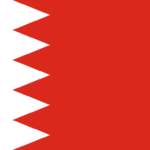-
Services
Services
Services--
- Records Management
- Document Storage
- File Management
- Media Storage
- Vault Storage
- Onsite Records Management
- Insight
- About Us About Us
- Locations
- Customer Center
Leveraging on technologies has opened new opportunities for businesses. The pace of adoption has been rapid and leaders throughout industries have ambitious visions of how digitization will transform their core businesses.
This vision may come to pass in some point. In the near term, however, it is highly unlikely that consumers will be able to fully integrate paperless processes, despite the myriad problems manual document processing entails. Although many organizations have made efforts to move away from paper, they have found that omitting it is more difficult than they expected. Both internal and external factors have made the transition to fully paperless processes nearly impossible as of yet.
Given that, finding ways to process paper-based documents in the most efficient way possible— and to smoothly merge data from paper and digital sources—is becoming a pivotal element for all businesses that must process a high volume of documents from different touch points.
OCR & ICR Technologies
Throughout human history, technological innovations have brought on change and adjustments that can replicate human capabilities to fuel economic growth and improve standards of living. The origins of Optical Character Recognition (OCR) can be traced back to the 1910s when an Israeli physicist, Emanuel Goldberg developed a machine that read characters and converted them into standard telegraph code. The adoption of the technology was accelerated when flatbed scanner was introduced.
In the 1990s, the OCR technology and related applications were widely used in the newspaper industry for archival preservation, which has enabled institutions to expand access to collections without putting rare and valuable news piece at risk of damage.
In the meantime, Intelligent Character Recognition (ICR) emerged as a way to digitalized printed-handwritten information.
Where are they now?
Today, OCR and ICR Technologies are the central pillar of automating paper documents, from omnichannel to analytics transformation and they have reinvented the ways different organizational units work on a day-to-day basis. Institutions of all sizes globally are taking advantage of data automation to help streamline processes and increase customer satisfaction. Here are 5 industries that have greatly benefited from implementing OCR & ICR softwares in their corporate functions.
Banking Industry
The banking industry has been traditionally paper-based such as customer records, cheques, and monthly statements used to be heavily paper based. Today, it’s easy to verify a cheque and a signature in real-time just by scanning it using OCR and ICR technologies. As a result of the application of these sophisticated features allows a more enhanced data security – and more efficient data processing.
Insurance Industry
Data capturing technologies play a significant role in the insurance industry as they help to accelerate claim processing time and in turn, enhances customer experience. This technological breakthrough allows employees to reduce manual document processing time as it can be tedious and repetitive while adding little value. Using digitalized information through OCR and ICR softwares will provide the companies key data to discover valuable consumer and operational insights.
Healthcare Industry
There is more than one way in which OCR and ICR technologies are helping the healthcare industry. The medical industry deals with thousands of data every day. The patients must provide their necessary information to receive treatments. However, storing the information about each and every patient can be hectic as problems might arise when information is buried in large piles of paper during an emergency.
By using these data capturing technologies, medical providers can get patients’ medical histories at just one click and access data such as past illness, treatments, and hospital records. These data can also use to keep up to date with logistics and consumables.
F&B Industry
As the industry is facing stricter requirements, there is an increasing need for a more advanced technology for the efficiency, quality, and regulatory compliance. OCR and ICR softwares have allowed food and beverage manufacturers to track the process from the raw material stage until the end when the product is packaged.
Traveling Industry
OCR features are making your travels easier and you don’t even notice. Most customs and immigrations at airports and travelling applications deploy OCR and ICR Technologies for security and data storage purposes. From scanning your passport to saving your personal data when you’re booking a flight or a hotel, all those features wouldn’t exist without these amazing technologies. It’s also an incredible way of reducing human error because OCR software can offer much more accuracy than manual processing.
As you can see, the benefits offered by these technologies go far beyond efficiency improvements. By combining the data derived from physical documents with the wealth of OCR and ICR technologies, a comprehensive data sets can be established. To fulfil the longer-term vision of a fully digitalized data processing within your business, it is crucial to approach companies with the right capabilities. At Crown Information Management, we are able to design the required processes and run the right system that are tailored for your business.
 Bahrain
Bahrain  Cambodia
Cambodia 